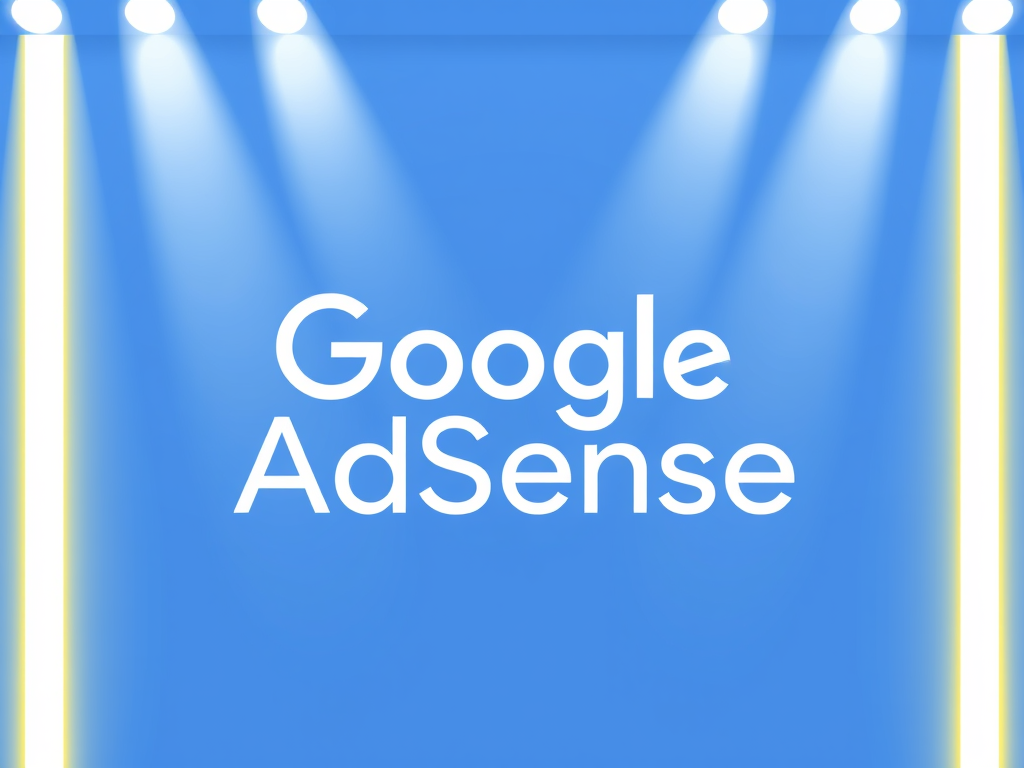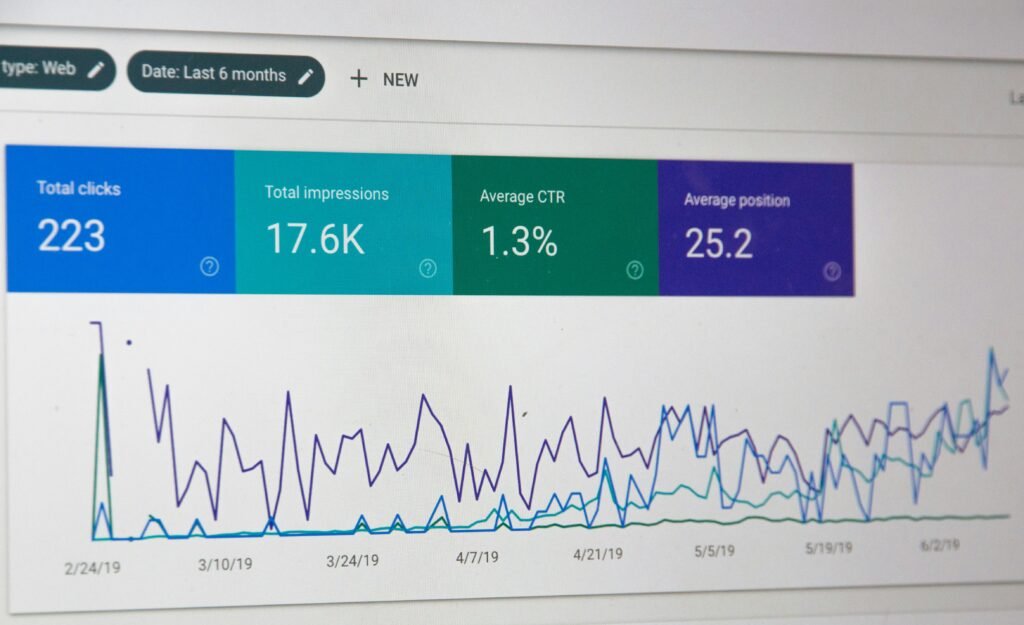
Introduction to Google AdSense
Google AdSense is a widely recognized advertising program that allows website owners and content creators to monetize their digital assets. By joining this platform, publishers can earn revenue through the display of targeted advertisements on their websites or blogs. The fundamental principle of Google AdSense revolves around connecting advertisers who wish to promote their products or services with publishers looking to monetize their content.
The process begins when an advertiser creates an ad campaign through Google Ads, specifying the target audience they aim to reach. Google then uses sophisticated algorithms and analytics to match these ads with relevant websites within its network. For publishers, integrating Google AdSense into their websites is straightforward; they simply need to sign up, generate ad codes, and place them strategically on their pages. This allows Google to serve ads that are tailored to the content of the site and the interests of its visitors, enhancing the likelihood of engagement.
With each click or impression generated by the ads displayed, the publisher can earn a portion of the revenue. This revenue-sharing model is what makes Google AdSense attractive to many publishers, as it compensates them for their effort in creating quality content and driving traffic to their sites. The earnings potential varies widely, influenced by factors such as niche selection, site traffic, and the geographic location of the audience. The balance between the supply of available ads and the quality of traffic a site attracts plays a pivotal role in determining ad performance and revenue.
In essence, Google AdSense serves as a conduit through which advertisers can reach potential customers while providing a viable income stream for content creators. This symbiotic relationship fosters a thriving environment for digital marketing and monetization, allowing both parties to benefit from a well-designed ad ecosystem.
Setting Up Your Google AdSense Account
Creating a Google AdSense account is a crucial step for individuals and businesses looking to monetize their websites through advertisements. The process begins by ensuring that your website meets specific eligibility requirements. Typically, your website must have quality content that complies with Google’s policies, possess a professional appearance, and represent a niche that adheres to AdSense guidelines. Before proceeding with the application, it’s advisable to familiarize yourself with the program policies to improve your chances of approval.
Once you have confirmed that your website meets the necessary criteria, you can initiate the application process. Visit the Google AdSense website and click on the “Sign Up” option. You will need to provide information such as your website URL, a valid email address, and your preferred payment method. It is essential that your website is in active condition, with sufficient content available for review, as Google will evaluate your site during the application process.
After you submit your application, Google will review your website for compliance with their policies and content requirements. The review may take several days, during which you should monitor the email associated with your AdSense account for any communications from Google. If your application is approved, you will receive a confirmation email, directing you to set up your account fully. If your application is not approved, Google will provide feedback on necessary changes to secure approval. By following these steps methodically, you increase your chances of creating a successful Google AdSense account, enabling you to earn revenue through advertisements on your website.
Choosing the Right Niche for Maximum Earnings
When embarking on the journey to monetize a website through Google AdSense, selecting an appropriate niche is pivotal for maximizing earnings. A profitable niche not only drives higher traffic but also attracts better-paying advertisers, ultimately enhancing income potential. The significance of choosing the right niche lies in its ability to balance audience interest with commercial viability.
High-paying niches typically include sectors such as finance, health, technology, and legal advice. These areas tend to yield higher cost-per-click (CPC) rates due to the competitive nature of the industries and the substantial potential financial gains for consumers. For instance, financial services and insurance are well-known for their lucrative options in the AdSense landscape, meaning that content within these domains can often attract valuable ad placements.
However, while pursuing high-paying niches, it is essential to be mindful of competition. A saturated market may indicate stiff competition, making it challenging for new websites to rank effectively and capture user interest. Therefore, research is vital. Tools such as Google Trends and keyword research platforms can provide insights into audience demand and competition levels within chosen niches. Moreover, considering sub-niches can often yield opportunities to target a specific audience with less competition yet sufficient earning potential.
Another strategy involves analyzing the existing content landscape to identify gaps or unique angles that can be filled. Unique content not only improves user engagement but also enhances the likelihood of attracting relevant advertisers willing to pay a premium for ad space. By employing data-driven analysis combined with personal interests or expertise, content creators can find a niche that is both rewarding in terms of revenue and sustainable over time.
Creating Quality Content to Drive Traffic
Creating quality content is a fundamental aspect of attracting visitors to your website and enhancing your earning potential through Google AdSense. The key to achieving high traffic is to develop content that is not only engaging but also valuable to your target audience. This involves understanding their needs and preferences, which can be accomplished through thorough research and analysis.
When crafting your articles, focus on producing well-researched, original content that provides insights or solutions to readers’ queries. Aim for clarity and coherence in your writing to keep readers hooked. Utilizing headlines and subheadings effectively can guide readers through your content and enhance readability. Additionally, integrating relevant keywords naturally within your articles can improve search engine optimization (SEO), making it easier for potential visitors to discover your content through search engines.
To further enhance user experience and retention, leverage multimedia elements such as images, videos, and infographics. These not only make your content more visually appealing but also cater to different learning styles, allowing users to engage with the information in various ways. Videos, for instance, can provide in-depth explanations of complex topics, while infographics can summarize key points succinctly.
Regularly updating your content and keeping it relevant is also crucial. Search engines favor fresh content, and by consistently adding new insights or revising existing articles, you can maintain higher search rankings and attract sustained traffic. Ultimately, producing high-quality, SEO-optimized content combined with engaging multimedia will not only draw in visitors but also increase the likelihood of generating revenue through Google AdSense.
Optimizing Ad Placement and Formats
When utilizing Google AdSense as a source of revenue, understanding the various ad formats and their optimal placements is crucial for maximizing click-through rates (CTR) and overall earnings. Google AdSense provides several ad formats, including text ads, display ads, rich media ads, and link units, each serving different purposes and audiences.
Text ads are widely recognized for their simplicity and effectiveness, often blending seamlessly with content. Display ads, which can be either image or video formats, tend to capture more attention due to their visual appeal. Rich media ads, which may include interactive elements, provide a more engaging experience, while link units offer a unique grid of links tied to advertisers. Selecting the right combination of these formats based on your audience’s preferences will contribute significantly to your site’s performance.
Furthermore, ad placement on your website plays a pivotal role in determining the success of these formats. Best practices recommend placing ads above the fold, ensuring that they are visible as soon as a user lands on your page. Additionally, integrating ads within content, such as between paragraphs or within articles, can lead to higher engagement and improved CTR, as users are more likely to interact with ads that complement the reading experience.
It is also important to consider responsive ad units, which automatically adjust their size depending on the device being used, whether desktop or mobile. This versatility ensures a consistent user experience across platforms while enhancing opportunities for ad visibility. Regularly testing different placements and formats can help identify which combinations yield the best results, allowing for data-driven adjustments tailored to your audience’s behavior.
Implementing these strategies not only boosts the effectiveness of your Google AdSense efforts but also contributes to a more user-friendly website environment. Engaging users meaningfully can transform passive viewers into active participants in your ad monetization strategy.
Tracking Performance and Understanding Analytics
To effectively earn money with Google AdSense, it is crucial to track performance and understand the analytics provided by the platform. The Google AdSense analytics dashboard offers a wealth of data that can help you gauge the success of your advertising efforts. By regularly monitoring this data, you can identify trends and adjust your strategies to maximize earnings. Key metrics such as impressions, clicks, and Click-Through Rate (CTR) serve as essential indicators of how well your ads are performing.
Impressions refer to the number of times ads are displayed on your website. A high number of impressions signifies that users are viewing your ads, which is a fundamental step towards generating revenue. However, impressions alone do not guarantee earnings; analyzing click data is equally important. Clicks indicate user engagement with the ads, and a higher number of clicks generally leads to increased revenue. The CTR, calculated as the percentage of clicks versus impressions, provides insight into ad performance and user interest. A higher CTR suggests that the ads resonate with your audience, while a lower CTR may prompt a reassessment of ad placements or formats.
Understanding these key metrics is vital for optimizing your strategies. For instance, if your CTR is low, you might consider experimenting with different ad formats or repositioning them on your website to increase visibility. Additionally, keep an eye on geographic data and audience demographics to tailor your content and advertising approach to better meet the interests of your visitors. This level of analysis not only aids in boosting earnings but also enhances the overall user experience on your site.
Utilizing the insights gained from the analytics dashboard allows you to create a proactive strategy for your AdSense campaigns. By consistently evaluating performance and making data-driven adjustments, you can work towards achieving your revenue goals more efficiently.
Compliance with Google AdSense Policies
Adhering to the Google AdSense policies is fundamental for anyone looking to earn money through this platform. These guidelines help ensure a satisfactory user experience and the integrity of the AdSense program. Users must familiarize themselves with the policies to avoid penalties or, in serious cases, account suspension. Non-compliance can result from various factors, including content violations, improper ad placement, or misleading practices.
One of the most critical aspects of maintaining compliance is ensuring that your website’s content aligns with Google’s content policies. This includes avoiding adult content, copyrighted materials, and any form of hate speech or violence. Additionally, you should steer clear of promoting any illegal activities or products. Websites that showcase misleading information or deceptive content are also at risk of violating AdSense policies. Regular audits of your content can help keep your site compliant.
Another vital policy pertains to the ad placement on your website. Google has established specific guidelines concerning how and where ads can be displayed. For instance, ads should not be placed in a manner that misleads visitors or interferes with the user experience. Moreover, excessive ad placements can lead to poor performance and potential account issues. It’s essential to maintain a balance between content and advertising on your site.
Staying informed about updates to Google AdSense policies is equally important. The guidelines may evolve, requiring users to adjust their strategies. A proactive approach to compliance not only helps avoid penalties but also enhances the credibility of your website. Ultimately, by maintaining a policy-friendly site, you can foster a stable environment for generating revenue through Google AdSense. Following these policies will also help create a seamless experience for your users, leading to better engagement and improved earnings.
Scaling Your Earnings: Advanced Strategies
As you navigate the path to maximizing your revenues through Google AdSense, embracing advanced strategies can play a pivotal role in enhancing your earnings significantly. One key strategy involves experimenting with various ad formats. Google AdSense offers a broad range of ad styles including display ads, text ads, and rich media ads. Each format can produce varying results depending on how well they align with your website’s content and audience preferences. It is advisable to monitor which formats yield the highest click-through rates (CTR) and adapt your strategy accordingly. This experimentation fosters a tailored advertising approach, ultimately boosting your revenue.
Additionally, targeting specific audience segments can enhance your AdSense performance. Utilizing Google Analytics, you can gain insights into your visitors’ demographics, interests, and behaviors. By understanding your audience better, you can refine your content and ad placements to cater to their preferences. For instance, if data shows that a particular demographic engages more with certain topics, you might consider adjusting your content strategy and advertising focus to align with these insights. This strategic targeting can lead to increased engagement and higher ad revenue, as ads become more relevant to the audience viewing them.
Moreover, integrating supplementary monetization methods alongside Google AdSense can significantly enhance your overall earnings. Consider incorporating affiliate marketing, sponsored posts, or even offering premium content subscriptions. By diversifying your income streams, you reduce reliance on AdSense alone and increase overall revenue potential. It is essential to choose additional monetization methods that harmonize with your site’s content and audience to maintain a positive user experience. As you implement these advanced strategies, maintain an adaptive mindset, continuously analyzing and optimizing your approach for sustainable earnings growth.
Conclusion and Future Outlook
In summary, Google AdSense has established itself as a powerful platform for monetizing website traffic through effective online advertising strategies. The key takeaways from this guide suggest that creating high-quality content, understanding your audience, and optimizing ad placements are essential components of a successful AdSense strategy. By focusing on these fundamentals, website owners can pave the way for consistent revenue generation and enhance the overall user experience.
As digital marketing continues to evolve, the landscape of online advertising is also changing. The increasing emphasis on user experience and the importance of mobile optimization are trends that will shape the future of platforms like Google AdSense. Advertisers are becoming more discerning, seeking innovative ways to engage consumers while also maintaining brand integrity. This shift indicates that simply relying on traditional advertising techniques may not yield the desired outcomes for publishers in the long term.
Moreover, the integration of artificial intelligence and machine learning into online advertising is expected to revolutionize how ads are targeted and displayed. AdSense is likely to leverage these advancements to enhance targeting capabilities, ensuring that advertisers reach more relevant audiences. For content creators and website owners, this means adapting to these changes by continuously enhancing their content strategies and exploring additional avenues for audience engagement through emerging technologies.
For aspiring AdSense publishers, the future holds great potential. By keeping abreast of trends and refining one’s approach based on best practices in digital marketing, individuals can maximize their revenue opportunities. The strategies outlined in this guide serve as a solid foundation, and by taking actionable steps today, readers can effectively position themselves for success in an increasingly competitive online environment. Taking initiative in implementing these strategies will be key to thriving alongside the future developments of Google AdSense and the broader digital marketing ecosystem.




